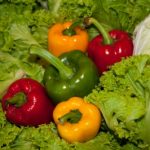Alternaria alternata is a filamentous fungus that plays a significant role in various ecological and pathological processes. It is a versatile species with a worldwide distribution, and it is known for its involvement in plant diseases, food spoilage, and allergenic reactions. This essay explores Alternaria alternata in detail, including its taxonomy, morphology, ecology, pathogenicity, mycotoxin production, and its impact on human health and agriculture.
I. Taxonomy and Classification
Alternaria alternata belongs to the fungal phylum Ascomycota and is classified within the class Dothideomycetes. Its taxonomic hierarchy is as follows:
- Phylum: Ascomycota
- Class: Dothideomycetes
- Order: Pleosporales
- Family: Pleosporaceae
- Genus: Alternaria
- Species: Alternaria alternata
Alternaria is a genus comprising various species, with Alternaria alternata being one of the most well-known members. The species name “alternata” suggests its alternative and alternating spore-bearing structures, which are characteristic of the genus.
II. Morphology
Alternaria alternata exhibits distinctive morphological features that facilitate its identification:
- Colonial Growth: On culture media, Alternaria alternata typically forms dark-colored colonies, ranging from brown to olive green or black. These colonies are often velvety or woolly in texture.
- Conidiophores: The fungus produces conidiophores, which are specialized structures for asexual spore production. These conidiophores can be simple or branched and bear conidia, which are the asexual spores.
- Conidia: Conidia of Alternaria alternata are usually one-celled, dark brown or black, with a characteristic beak-like or beaded appearance. The conidia can have varying shapes and sizes, depending on the species and environmental conditions.
- Conidiogenous Cells: Conidiogenesis occurs from specialized cells on the conidiophores called conidiogenous cells. These cells produce conidia through both sympodial and percurrent proliferation.
- Septation: Conidia are typically septate, meaning they contain internal cross-walls (septa) that divide the cell into distinct compartments.
III. Ecology and Habitat
Alternaria alternata is a saprophytic fungus, meaning it obtains nutrients from decaying organic matter. It can thrive in various ecological niches, including soil, plant debris, and indoor environments. This fungus is particularly associated with a variety of plant hosts, where it can function as both a pathogen and a saprobe.
- Plant Pathogen: Alternaria alternata is well-known for causing various plant diseases. It can infect a wide range of plants, including fruits, vegetables, and ornamental crops. Some of the diseases it causes include black spot of citrus, leaf spot of tomatoes, and brown spot of bananas.
- Soil Saprobe: In the environment, Alternaria alternata contributes to the decomposition of plant material. Its ability to break down organic matter makes it an essential component of the soil microbial community.
- Indoor Environment: Alternaria alternata is also found in indoor environments, such as homes and buildings, where it can grow on damp surfaces and contribute to indoor air quality issues.
IV. Pathogenicity
As a plant pathogen, Alternaria alternata poses a significant threat to agriculture and horticulture. It is responsible for various plant diseases, often causing symptoms such as leaf spots, fruit rot, and other forms of tissue damage. The pathogenicity of Alternaria alternata is multifactorial and involves several key mechanisms:
- Penetration and Colonization: The fungus gains entry into plant tissues through wounds, natural openings, or directly through the plant’s cuticle. Once inside, it colonizes the host by producing hyphae that invade and grow within the plant.
- Toxin Production: Alternaria alternata is capable of producing mycotoxins, which are secondary metabolites toxic to the host plant. These mycotoxins can disrupt plant cell function and contribute to disease development.
- Induction of Host Defense Responses: In response to the fungal invasion, the host plant initiates defense mechanisms, such as the production of antimicrobial compounds and reactive oxygen species (ROS). Alternaria alternata can counteract these defenses and continue to colonize the host.
- Conidia Production: The fungus produces conidia on the plant surface, which can serve as a source of inoculum for further infections and spread of the disease to nearby plants.
V. Mycotoxin Production
Mycotoxins are toxic secondary metabolites produced by some fungi, including Alternaria alternata. The mycotoxins produced by this fungus can have adverse effects on both plants and animals. Some of the mycotoxins associated with Alternaria alternata include:
- Alternariol (AOH): Alternariol is a mycotoxin with known genotoxic and cytotoxic properties. It has been found in various agricultural commodities, including grains and fruits.
- Alternariol Methyl Ether (AME): AME is a derivative of alternariol and is considered less toxic than AOH. It has also been detected in food and feed.
- Tenuazonic Acid (TeA): Tenuazonic acid is another mycotoxin produced by Alternaria alternata. It has been associated with food and feed contamination and is a potential concern for food safety.
- Altertoxin I (ATX-I): ATX-I is a mycotoxin produced by Alternaria species and has been detected in various agricultural products.
These mycotoxins can contaminate crops and pose risks to human and animal health when consumed in contaminated food products.
VI. Impact on Human Health
Alternaria alternata can affect human health in multiple ways:
- Allergies: Exposure to Alternaria alternata spores in the air can trigger allergic reactions in sensitive individuals. This fungus is a common outdoor allergen and a major cause of hay fever and asthma exacerbations.
- Mycotoxin Exposure: Mycotoxins produced by Alternaria alternata, such as alternariol, tenuazonic acid, and altertoxin I, can contaminate food and feed. Ingesting these mycotoxins can lead to health issues, including gastrointestinal problems and potential long-term health risks.
- Invasive Infections: Although rare, some immunocompromised individuals can develop invasive infections, including skin and soft tissue infections, caused by Alternaria alternata. These infections are typically associated with traumatic injuries or pre-existing medical conditions.
VII. Agricultural and Economic Impact
The presence of Alternaria alternata in agricultural and horticultural settings can lead to significant economic losses. It causes diseases in various crops, resulting in reduced yield and quality. For example:
- In citrus production, Alternaria alternata is responsible for black spot disease, which affects fruit quality and marketability.
- In tomato cultivation, Alternaria alternata causes leaf spot disease, leading to reduced crop productivity.
- In banana farming, Alternaria alternata can result in brown spot disease, causing premature ripening and reduced shelf life.
Controlling and managing Alternaria alternata in agricultural settings often involves cultural practices, the use of resistant crop varieties, and, in some cases, the application of fungicides.
VIII. Conclusion
Alternaria alternata is a versatile fungus with various ecological roles, including plant pathogen, saprobe, and allergen. It is known for causing plant diseases, producing mycotoxins that can contaminate food and feed, and triggering allergies in sensitive individuals. Understanding its taxonomy, morphology, ecology, pathogenicity, mycotoxin production, and impact on human health and agriculture is essential for effective disease management, food safety, and public health.


Leave a Reply